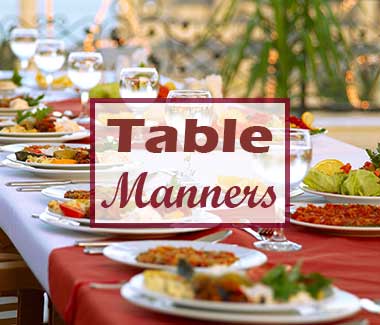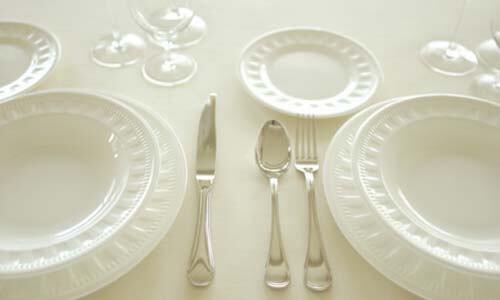Czech Republic and Slovakia Dining Etiquette
Dining etiquette for drinking. The more you drink, the more you will be offered. If you don't want to drink anymore, leave your glass more than half full.
Dining etiquette for toasts. The most common toasts are naz drovie (Czech) and naz drovia (Slovak) - both mean "to your health." Never break eye contact while making a toast, from the moment the glass leaves the table until you place it back down. There can be many toasts throughout a meal; you will be expected to make one in a small group at some point, especially if you have been toasted personally or are the guest of honor.
Dining etiquette for beginning to eat. Do not begin eating until everyone has received food on their plates and the host invites you to start; this is usually done by saying, "dobrochot,"
Dining etiquette for utensils. Czechs and Slovaks do not switch knives and forks. The knife remains in the light hand, and the fork remains in the left. When the meal is finished, place your fork and knife together so that they are parallel on one side of the plate in a vertical position; if you cross your knife and fork over the plate, it means you are just taking a short break and have not finished yet. If you're unsure of which utensil to use, always start from the outside and work your way in, course by course. The fork and spoon above your plate are usually for dessert.
Dining etiquette for eating bread. Bread is usually served without butter, and there is usually no bread plate (place your bread on the side of your main plate or on the table throughout the meal).
Dining etiquette for using your hands. Your hands are expected to be visible above the table. Rest your wrists on top of the table.
Dining etiquette for passing food. Pass all dishes at the table to your left.
Dining etiquette for gravy or sauce. If there is gravy or sauce, you can generally use your bread to soak some of it up.
Dining etiquette for seating. The most honored position is at the head of the table, with the most important guest seated immediately to the right of the host. If there is a hosting couple, one will be seated at each side of the table.
Dining etiquette for order of service. At the table, the oldest woman or most honored guest is served first.
Dining etiquette for restaurants. In informal restaurants, you may be required to share a table. Wait staff may be summoned by making eye contact.
Dining etiquette for talking business. The business lunch or dinner, depending upon how well developed your relationship is with your Czech or Slovak colleagues, is generally not the time to make business decisions. Take your cue from your Czech or Slovak associates.
Dining etiquette in a home. Allow the more senior members of your party to enter rooms ahead of you. At the table, do not presume to seat yourself, as the seating arrangement is usually predetermined. You might have to remove your shoes before entering a Czech or Slovak home.
Dining etiquette for paying the check. Usually the one who does the inviting pays the bill, although the guest is expected to make an effort to pay. Sometimes other circumstances determine the payee (such as rank).
Dining etiquette for tipping. A 10 percent tip is usually sufficient for restaurants. Restaurants may not have the 10 percent tip already included on the bill, so be sure to ask.




